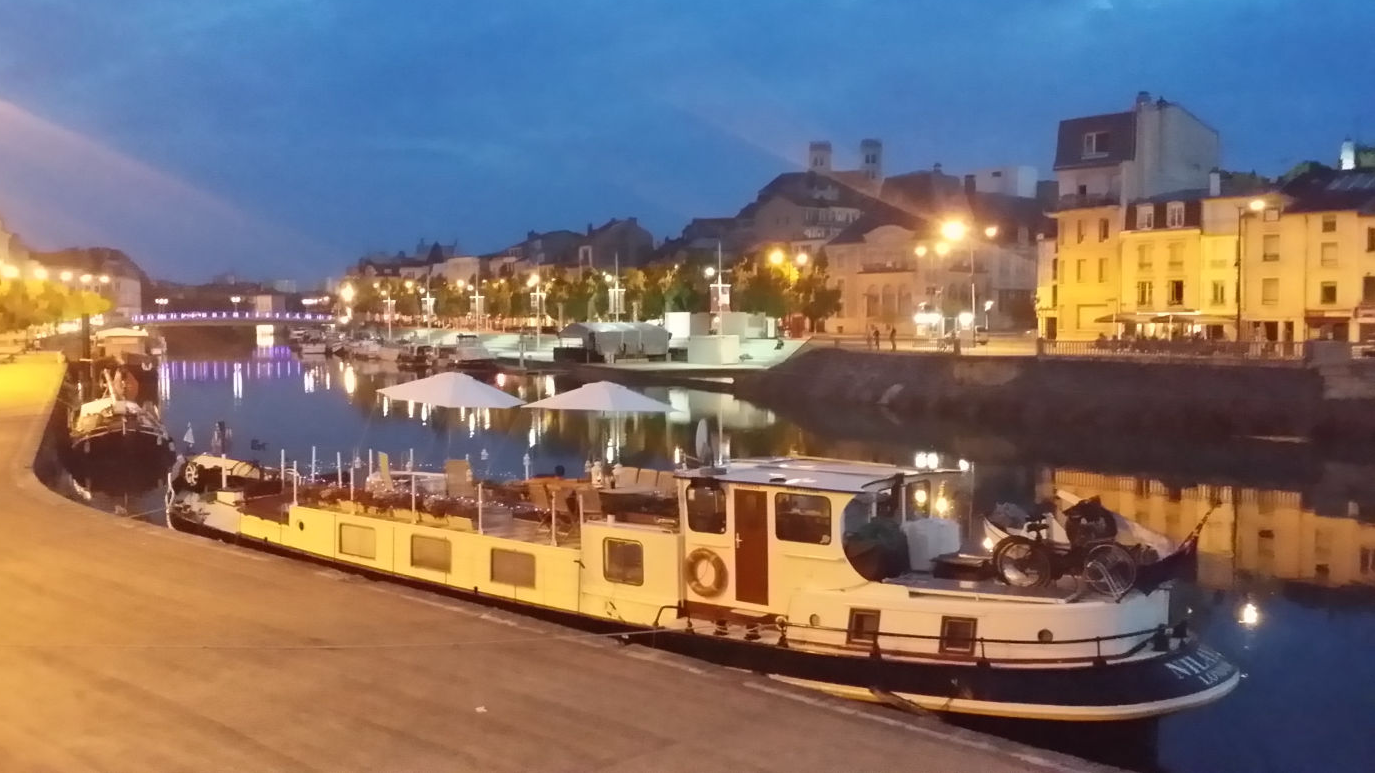
You'll find Isabelles gorgeous descriptions of the regions of France through which we cruise above brief details of our different regional routes and links to fuller details of these.

The Lorraine region is probably not as famous as its neighbouring Burgundy or the postcard picturesque Provence. Nevertheless, this region is quintessentially French and has a lot to offer to the tourist who's not only passing by, like the traditional song 'Passing by Lorraine' declares, but slows his path and opens his senses…
Nature lovers would be enchanted by the diversity of landscapes, dense forests, pastures, mountains and lakes. Yes, you read correctly, mountains. Our cruise routes to Corre and Saverne meander through those Vosges Mountains. Spectacular and bucolic.
The main towns abound with history and culture. Verdun and the sacred way are extremely moving sites, witnessing of the ravages of WWI.
Nancy is more heart lifting, the cradle of Art Nouveau and a lively patchwork of architectural styles. Wander around the narrow streets of its medieval old town, be impressed by its flamboyant gothic basilica St Epvre, succumb to Baccarat or Daum glassworks and to finish your day, enjoy an ice cream or a local beer in the majestic UNESCO Place Stanislas.
Don’t forget water… We're not only talking about the 700km of navigable waterways within this region alone, but the fish filled rivers and peaceful lakes. You can also relax and sooth in thermal spa towns such as Vittel, Plombières or Contrexeville.
And of course food… During your stay in Nancy, you've got to visit its central market. Set in an impressive hall, it's a foodies’ mecca. An amazing range of fruit, vegetables, game in season, fishmongers, all the cheeses you ever wanted to discover, poultry, crunchy bread, jam and much much more. It’s closed on Sunday but instead, you can wander its old town where a lively farmers market takes place, just at the foot of the gothic Musée Lorrain.
In Verdun, the Friday market is the weekly rendez-vous. The normally quiet town bustles with merchants of all sorts of chatty people. One of our favourites is what Kevin and I call the mushroom women. You never saw so many freshly picked mushrooms! Chanterelles, morells, boletus, ceps, … Soon transformed by magic into a fluffy tasty quiche or maybe a risotto? The sellers seem to resemble their wares...
Epinal also hosts a lovely covered market in its old town where we go with our shopping trolley to pick up fresh greens, appetising fruits like local blueberries (called brimbelles locally), a main ingredient for a heavenly tart. Shopping in such colourful lively places is part of the pleasure of cooking. Lorraine gastronomy encompasses all those delights. Mirabelles, small juicy golden plums plays a big part in local cuisine but there are more flavours on offer. As the weather can be icy cold during winter, food is convivial and invigorating as a result.
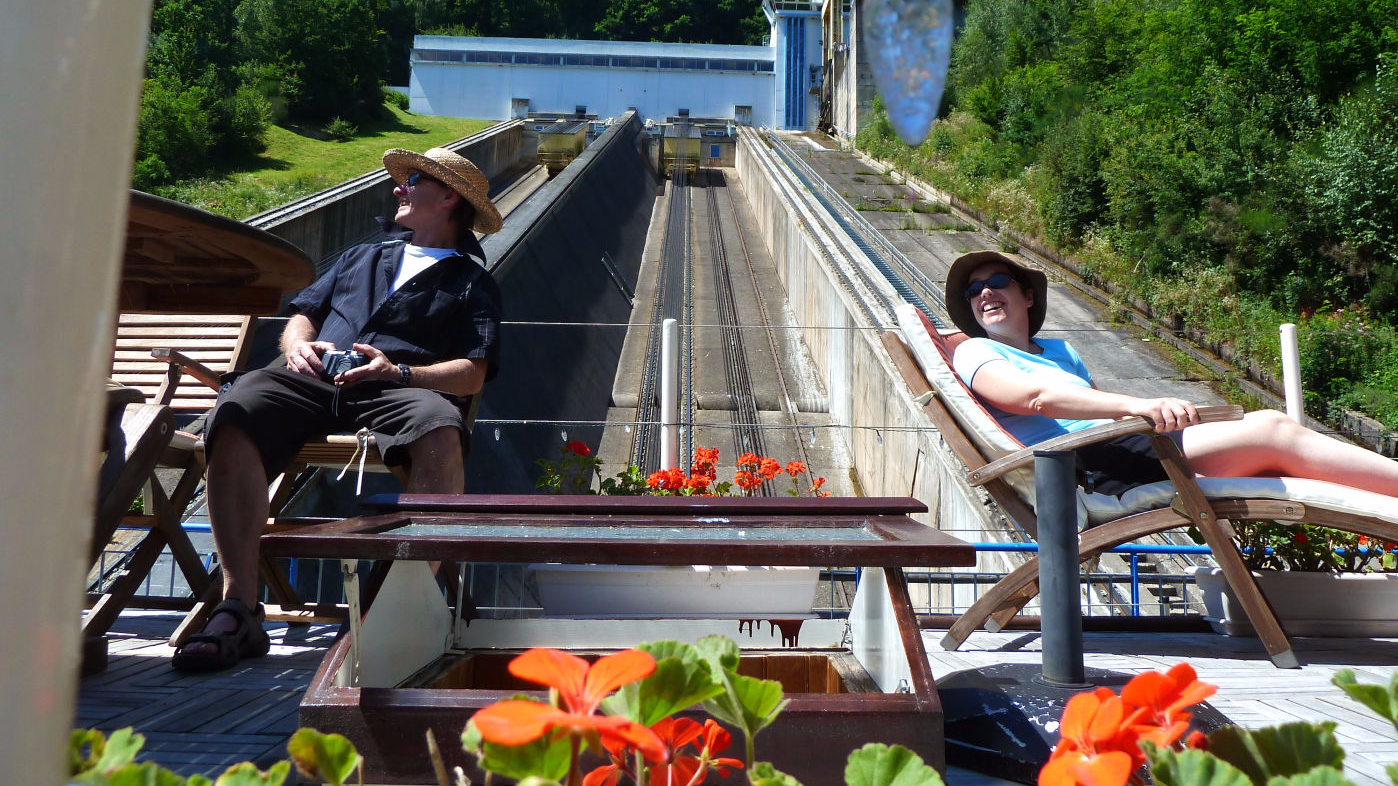
Amongst all our cruise routes, none offers as many cruising experiences. The itinerary from Nancy to Saverne (and vice versa) has it all. Two tunnels, one barge lift and an impressive cathedral like lock. It is quintessential barging.
Mostly pastoral leaving Nancy, the canal slowly becomes bordered by the Vosges mountains and its forests. Birds watchers will thus have the opportunity to see the usual ducks and swans but also egrets, storks, cormorants, kingfishers, hawks and many other birds of pray.
Disputed for centuries by the French and the Germans, this region has changed hands more often than a book in a library. Not surprising then that the cuisine, the architecture, the language are such a rich mixture of both cultures. Immobile guardians of our passage, the lofty ruins of medieval castles scattered along our way, protect us while colourful half-timber framed houses with flower boxes dripping with bright red geraniums welcome the barge and its guests Lutzelbourg and Saverne.
Along a major part of the cruise, the towpaths have been transformed in easy-going cycle / walking paths. Each mooring, either in the countryside or small towns, there are opportunities to stretch your legs and discover the French countryside and day to day life.
For the more agile people, there's an amazing circular walk in Lutzelburg, meandering through the woods and ending at the top of a hill, flanked by medial castle ruins and incredible views overlooking the canal. Alsacian food makes a big deal about pork, potatoes, cabbage and wine. Ingredients you'll find everywhere and with so many different ways of cooking them.
We advise you to push open the door of a traditional 'Bierstub' and sample some of the filling but tasty dishes wearing extremely singular names such as:
Choucroute : pickled cabbage served with a heap of smoked pork, ham and sausages. Some restaurants suggest a lighter but as savourus fish version. Personally, we prefer the meaty one.
Baeckoffe : a multi-layered hotpot composed of pork, lamb and beef, sliced potatoes, carrots and leeks, topped with white wine and cooked for at least three hours in a sealed clay pot.
Flammenküche: a combination of sliced onions, little pieces of bacon, grated cheese, sometimes sliced mushrooms on sour cream. Its cooked quickly on a very thin pizza base. We like to share one with an aperitif or better still, with a Licorne beer, the local brew of Saverne.
If you’re a wine amateur, we suggest to rent a car and allow yourself a few days drive through the Alsacian wine route. It's far less well known than Burgundy but this region has nothing at all to be ashamed of. On the contrary in fact! Follow the windy roads from Strasbourg to Colmar, stopping here and there for a wine tasting, fill your SD card with pictures, enjoy the warm welcome of a B&B's, Inns or a cosy hotel. Our favourites are the walled medievel villages of Riquewir and Turkheim with storks nesting high atop the chimneys.
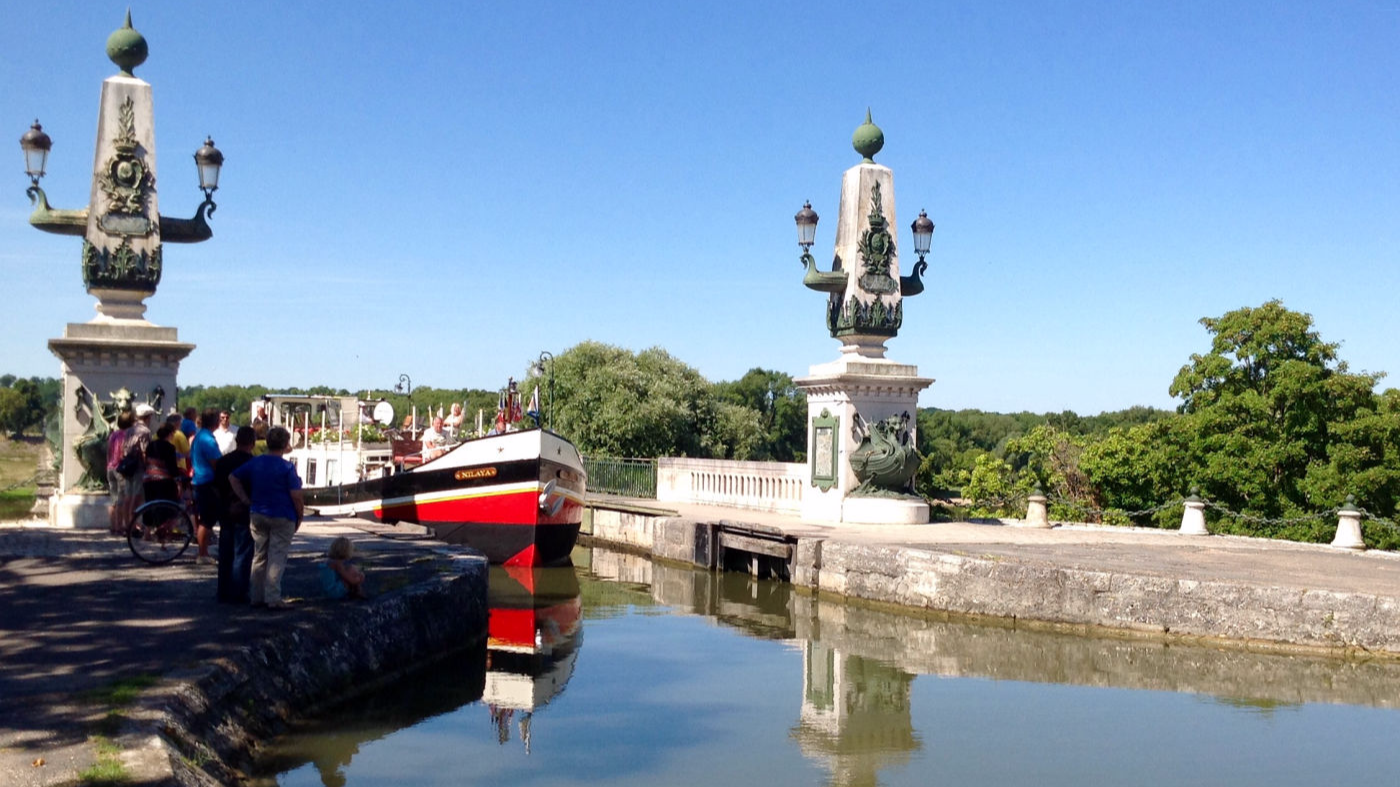
Most French regions and departments owe their name to a river, mountain or some other geographic peculiarity. But out of all of them, none bears its name as well as the Loire Valley. The meandering waters of the Loire are said to be more capricious than a girl's mood, low and quiet in the morning, with untamed forceful currents overflowing the plains after a stormy evening, then low again revealing treacherous sand banks on which so many boats ran aground...
The Loire had thus shaped and accompanied the history, the agriculture, the cooking and the industrial development of the region. From the elegant and somehow excessive Chateaux (Blois, Chenonceau, Amboise, Chambord etc.) set further downstream, to troglodyte villages on surrounding cliffs, the vineyards around Saumur, Tours or Sancerre, to green pastures dotted with languidly grazing white cows.
For a long time, the Loire River has been one of the main shipping routes connecting the inland with the Atlantic Ocean. Since the 15th Century, wooden built boats called Gabare were used for the transport of varied goods such as wine, stones, sand, minerals, wood, iron ore, coal, tiles and bricks or more simply, for fishing. Thanks to their low draft and flat bottom, these sailing barges could charter relatively heavy loads up and down stream, even when the water level was low.
With the industrial revolution came the need for a more reliable and extensive transport network. Canals and industry went together like love and marriage, making the traditional wooden craft redundant. By 1838, the "Canal Latéral à la Loire" was born and, with it, majestic aqueducts crossing the river Loire at Digoin and the river Allier at Le Guétin. Another famous one, completed by Gustave Eiffel himself by the end of the 19th century, steps over the Loire at Briare, thus allowing the journey to continue towards the Seine and Paris. All of this fluvial infrastructure makes this particular canal one of the most impressive but probably one of the most costly to build. Once completed, the 22 tons cargos carried by Gabares were nothing compared to the 300 ton barges pulled by a single horse, electric mules and later superseded by Diesel engines.
New changes are underway. Towns are developing around the building / maintenance of barges or factories easily supplied by the waterways.
In the olden days, the charming village of Apremont sur Allier was famous for its quarry and cut stones (used to build the Cathedral of Orleans, for example). Nowadays, this picturesque hamlet's one of the most beautiful villages in France and many visitors succumb to the charms of its stunning botanical gardens.
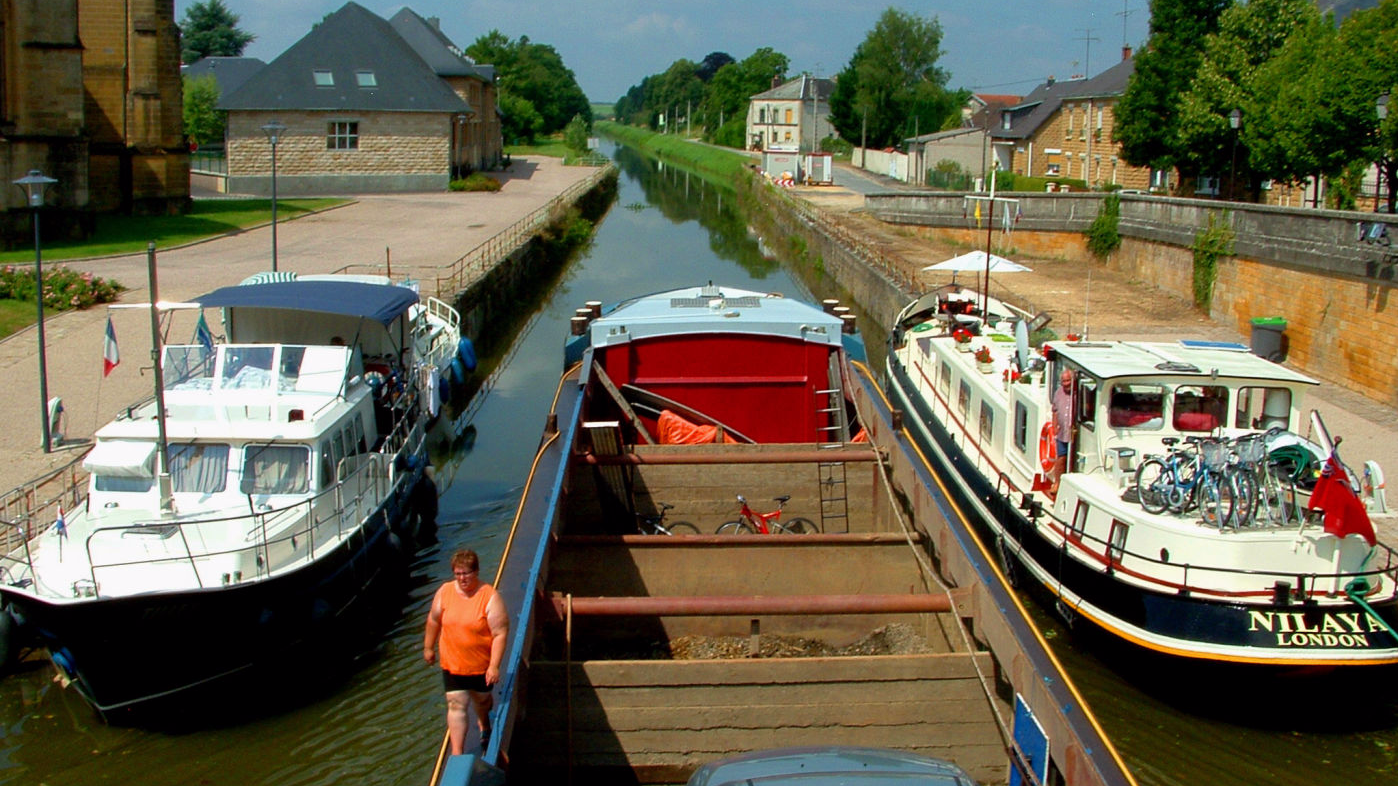
Before it became famous for its bubbles, the Champagne region was once called the barn of France. When cruising through its immense fields scattered by yellow patches of mustard or sunflowers, you'll know why.
If its plains are mostly devoted to cereal crops, the hills surrounding Reims and Épernay host some far more noble harvests. The quilt like landscape's made of vines, stretching their branches like the arms of a yogi at sunset, offering their precious grapes to the sunbeams. All the famous brand names take their roots from here. Mumm, Heidsick, Veuve Cliquot, Taittinger, Bollinger. For centuries, winemakers learned, developed and improved their technique in transforming Pinot Noir and Chardonnay grapes into that fizzy bubbly drink that accompanies all the celebrations and happy moments of our lives so well!
If Epernay is known as the capital of Champagne, Reims is the holy city in whose cathedral so many French Kings have been crowned. This flamboyant baroque cathedral celebrated its 500 anniversary a few years ago and we visited just after it has been beautifully renovated, its extravagant limestone carving reaching high into the sky. Other old stones awaits you in town. Those of the age old vaulted caves where Champagne is preciously matured. Most of the vineyards organise tours and tasting.
With a risk of repeating ourselves, we'd describe Champagne gastronomy as an inventive mix of fine cuisine and traditional culinary heritage. Restaurants in both Reims and the countryside will ravish the most exigent pallets as well as ones who prefer simpler bistro type cuisine. In that matter, since the first king was crowned here (a five hours ceremony followed by a banquet cast in the same mould), Reims and Champagne never failed in their reputation.
There's no French town without its market hall. The Halles de Boulingrin were built in the late 1920s and a perfect example of Art Deco architecture, now registered as historic monument. A food market is held there on Wednesday, Friday and Saturday mornings. Naturally, it's one of our favourite spots to pick up the freshest and best products as all local farm producers gather here. Among them, cheese. Lots and lots of cheese. Kevin's favourite is Chaource, a creamy soft cow’s milk cheese with white velvety crust and a faint smell of mushrooms.
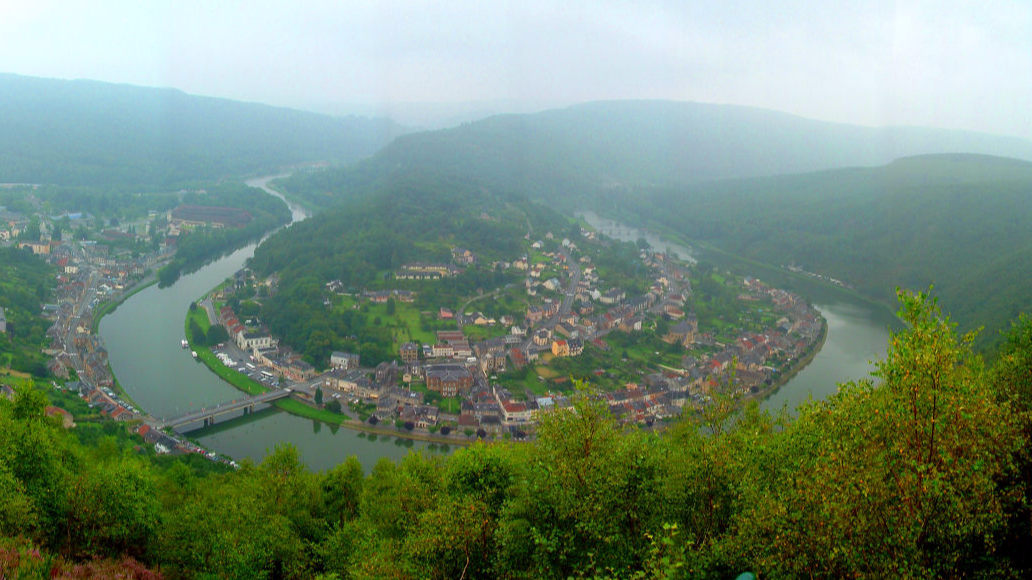
With its sharp leafy cliffs diving into the meandering river, its unspoiled villages and its dense forests nesting undisturbed wilderness, the Ardennes is a place of legends where trolls and fairies live in the undergrowth, mountains and knights turned to stone. Sometimes wide, sometimes narrow, the Meuse loops its way from France to Belgium to Holland, Charleville Mézières to Dinant, Namur, Leige, Maastricht and beyond.
The French side hosts the vestiges of an industrial past. Look at the roofs in its unchanged villages. Slate, the black gold of the Ardennes. Later, the river became the main ally of mining and metallurgic activities but nowadays, the region rediscovers its natural patrimony and has transformed itself for tourism.
Touristic activity was always present on the other side of the French border and even known as the Belgian Riviera, a name inherited from the golden years when many people spent their summers here and still do. Huge mansions with fancy architecture, picture postcard hamlets, bistros oozing of character and locally brewed beers.
Naturally, the Ardennes is profoundly attached to its traditions and its gastronomy's a reflexion of its terroir. Here, even more than elsewhere, local products are extremely conspicuous. Pork products, rich pâte, game, beer stew, river fish like trout or pike, melting in the mouth (and on the fingers too), brown sugar tart!
Here, we have local markets, traditional butchers and producers to forage for the best ingredients for our meals. There's a fantastic butcher in Fumay with all those meats, smoked ham and pate.
When we moor in Revin, set in the forest high at the top of a hill, there's the quirky but cosy Ferme Auberge du Malgré Tout where you can enjoy all the local specialities with a nice bottle of wine. In Autumn, game's naturally on the menu and you simply can't resist the Tourte Ardennaise, a flavoursome sort of meat pie. We won't say more because surprise is part of the pleasure!
A wonderfully wild weeks cruising through foothills of the stunning Vosges mountains. In places the canal passes through what feel like landscaped gardens such is the variety of trees. There's a surprising number of simple eateries and lovely quiet forest moorings plus you get to start in the pleasant little town of Epinal with its world famous Imagerie. If you like nature and being in the middle of nowhere, it doesn't get more idyllic than this route!
Rural and beautiful is how we'd describe this wonderful route between Nancy and Epinal. You start with all the classy charms of art nouveau Nancy. We cruise the upermost reaches of the River Moselle past medieval Liverdun and Vauban fortified Toul before we head south through small hamlets along the Canal des Vosges. Epinal's a sleepy little town with great character in the foothills of the Vosges.
An amazing route taking in one of Frances deepest canal locks, two long tunnels and the world famous marvel of engineering, the St Louis Arzviller inclined plane barge lift.
Starting near beautiful Nancy, the cruise rises slowly through bucolic pastures, across the canals summit, before decending quickly through the Zorn valley into Alsace and Saverne. This route offers all that's irresistible about the French waterways.
Nancy to Verdun offers another of Frances most beautiful cruising experiences. From Nancy with its Unesco world heritage Place Stanislas, wide stretches of the Moselle, medieval Liverdun and and Vauban fortified Toul, there's gorgeous rural countryside right through to battle scarred Verdun and its tragic history. We'll also have time to explore some WW1 trenches and American memorial, the Butte de Montsec with its spectacular views
Join Nilaya in the pretty riverside town of Verdun and site of a battle in 1916 that cost nearly a million lives, I'll take you on a tour of the main battlefield sites in my car. It's amazing just how many trenches and shell craters can still be seen!
During the 6 night cruise we'll enjoy the meandering River Meuse through to the capital or the Ardennes region, Charleville Mezieres. A pleasant town laid out in the 17th century around Place Ducale, one of the most beautiful Louis XIII squares in France.
The 'Magical Meuse', offers breathtaking canal and river scenery from beginning to end. In "Cruising French Waterways" by Hugh McKnight, he wrote of the Meuse (Canal de l'Est) "It is a marvel of French bureaucracy that one of the country's most attractive river navigations should be officially known as the Canal de l'Est (Branche Nord)" He wrote further, "Now begins one of the finest portions of river landscape in Europe." His comments refer to the River Meuse from Charleville-Mezieres to the Belgian border. Why not join us and find out for yourself?
This glorious cruise from Franche-Comte through to Burgundy takes in some wonderfully rural countryside. It's a fine mix of small villages, small towns with some excellent dining opportunities along the way. You join us in the small village of Corre before we embark on a cruise down the uppermost reaches of the mighty River Saone. The river widens every day and we'll moor in a mix of small riverside towns such as Port sur Saone, Gray and wild rural locations perfect for country walks. The cruise ends in Auxonne.
Starting from the beautiful small town of Paray le Monial, over five cruising days and six nights, we'll follow the scenic Canal du Centre through Burgundy. Paray is the second most visited pilgrimage site after Lourdes and well worth exploring in detail.
This route has a lot of canal locks, three lifting bridges and great canal side eateries. We end the cruise in Santenay, a small Cote d'Or village 20 minutes from the wine capital of Burgundy, Beaune. You'll visit Beaune via a scenic drive through the nearby vineyrds, plus the lovely Chateau de Dree.
Lots of rural cruising from Paray le Monial through to the magnificent Loire river city of Nevers. We cruise across a magnificent aqueduct over the River Loire at Digoin and during your five cruising days and six nights aboard, we moor in agricultural communities such as Diou, Chevenon, maybe Beaulon and Decize for example. You'll visit the magnificent Chateau de Dree and one of Frances most beautiful sleepy villages and gardens, Apremont sur Allier.
This fabulous six night Loire barge cruise starts in Nevers. We cruise across two incredible aqueducts, tour Sancerre vineyards, sampling some of its fine wines along the way. You'll enjoy tasty 'Crottin de Chavignol' cheeses and Charollais beef that make this region so famous. Other than wonderful cruising, you'll discover the stunning gardens and riverside village of Apremont, Charite sur Loire and Chateau St. Fargeau not to mention the waterways capital of France, Briare.
You'll join Barge Nilaya in Chateau-Thierry, a pleasant small town on the banks of the River Marne. This weeks cruising is all about Champagne and over the coming days we'll visit all the major centres associated with this wonderful bubbly liquid! Fierce first world war battles were fought in the countryside nearby and an imposing American memorial to Cote 204 lies ten kilometres away. The cruise ends in classy Reims with its cathedral, Champagne houses and oh so many restaurants!
Join Nilaya in the stunning regal city of Reims and enjoy a very rural cruise through the wild canal des Ardennes through to the capital or the Ardennes region, Charleville Mezieres. A pleasant town laid out in the 17th century around Place Ducale. Uncover a side of France few get to see as we 'dredge' our way along the picturesque Canal des Ardennes, the highlight of which is the 27 lock staircase of the Montgon flight.
IMPORTANT NOTE: Unforeseen circumstances sometimes affect our cruising schedule. These can include, but are not limited to: illness, floods, weather, canal closures, canal maintenance, lack of moorings, bureaucracy, strikes, civil disturbance, acts of god, the engine, and whims and fancies of both skipper, guests and crew. All of these things might cause last minute changes to the above and cruise routes. Although rare, we reserve the right to alter any and all routes accordingly. Flexibility is the name of the game and any such changes cannot be considered grounds for cancellation of the cruise.